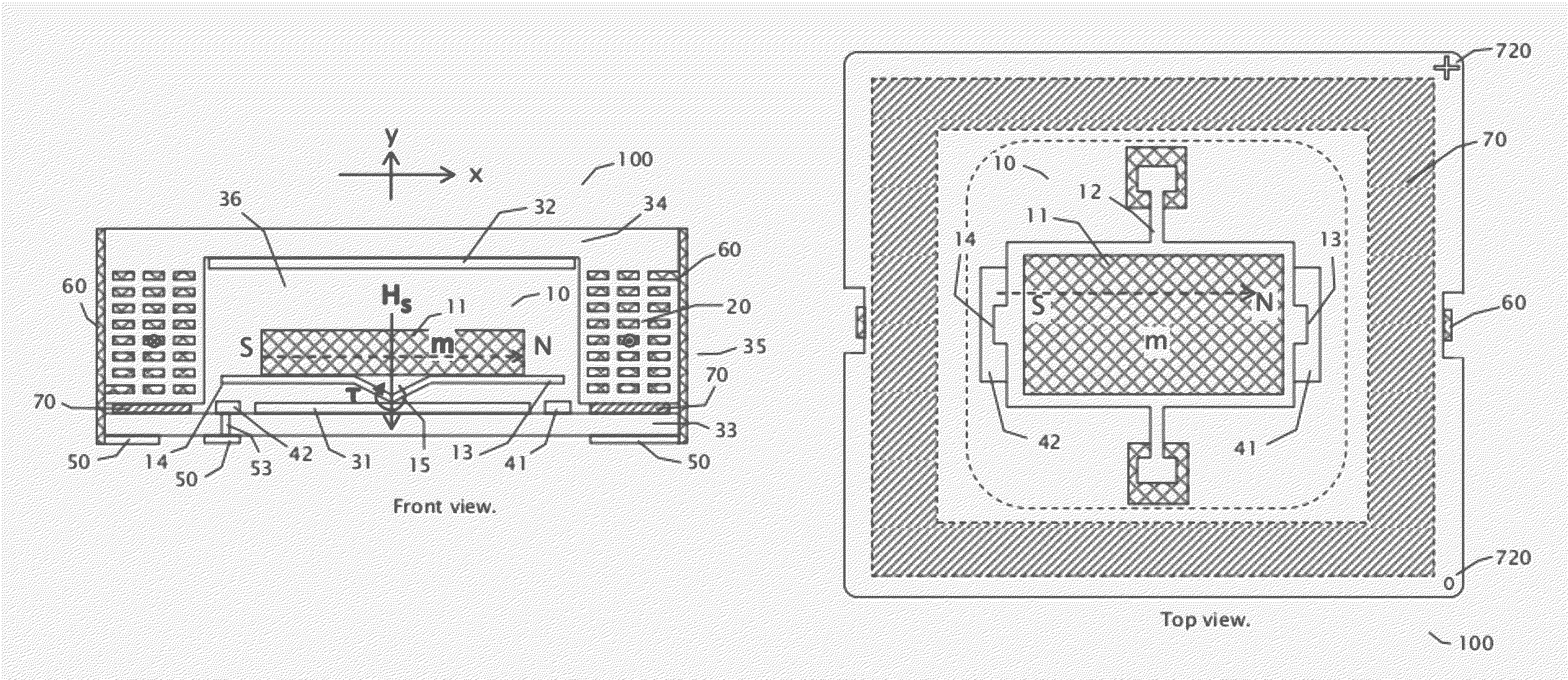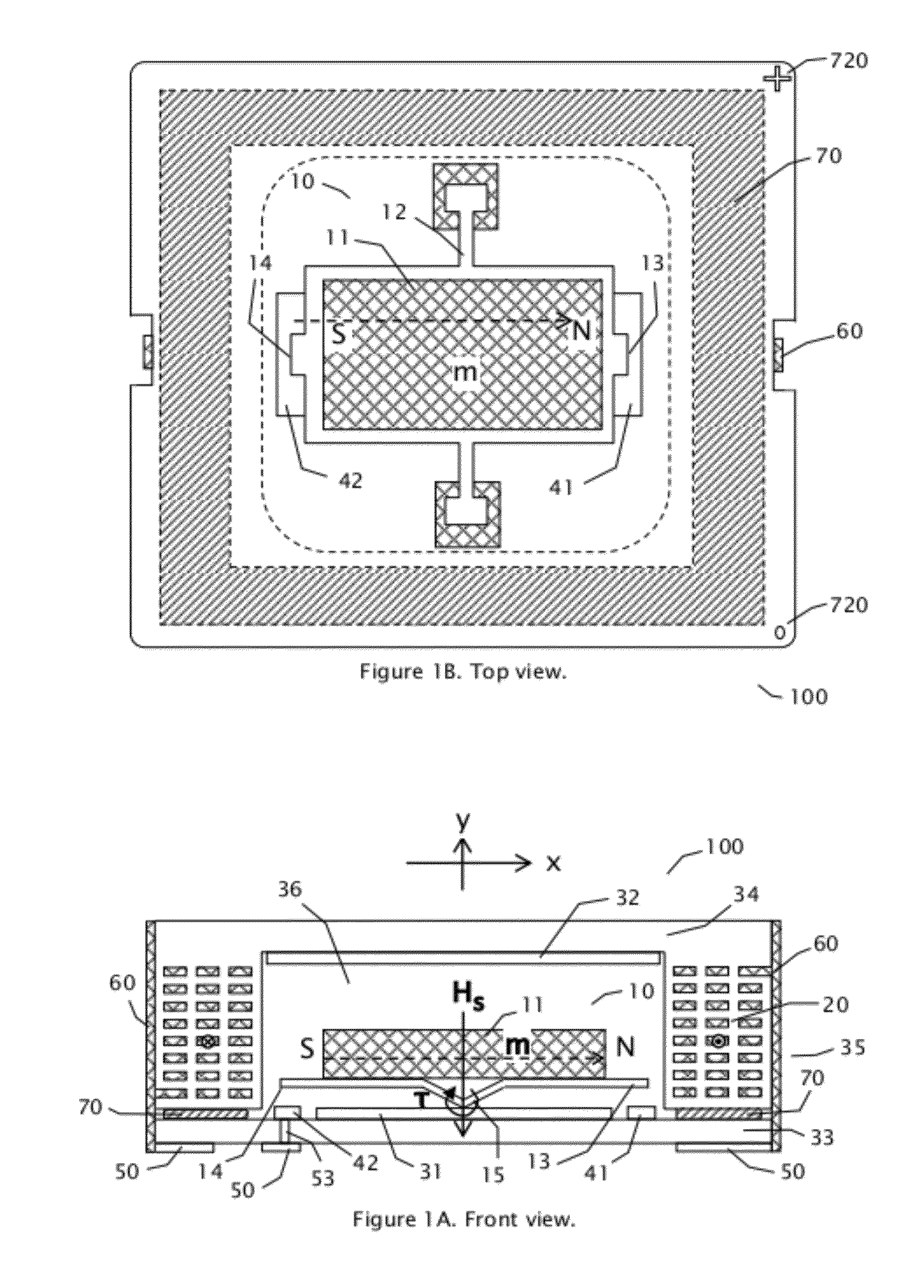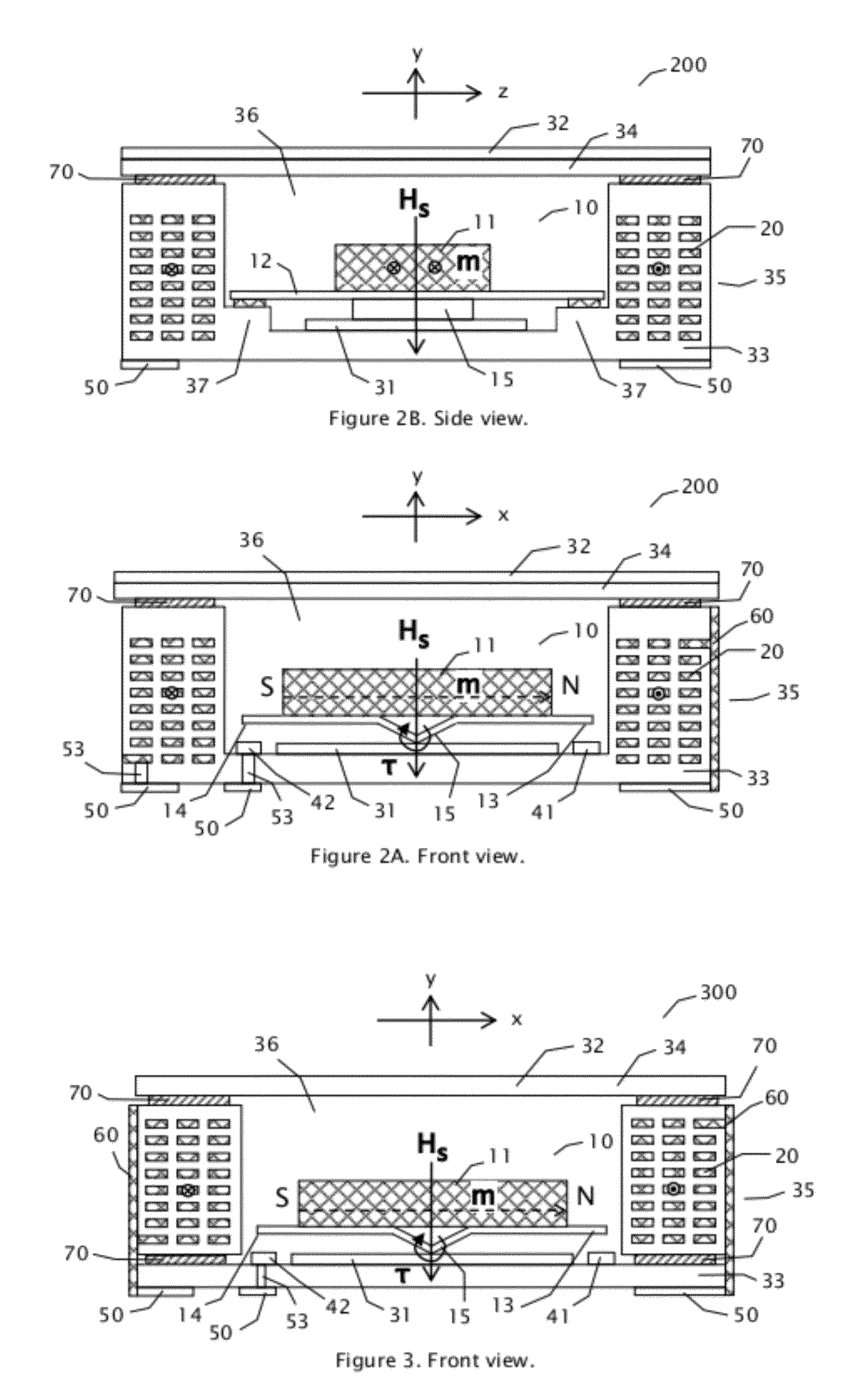Electromechanical relay and method of making same
a technology of electromechanical relays and relays, applied in the field of relays, can solve the problems of large coil size, high unit-to-unit variability and high unit cost, and the general structure of assembly-line processes is generally relatively complicated, and is difficult to fabricate other than using conventional winding methods
- Summary
- Abstract
- Description
- Claims
- Application Information
AI Technical Summary
Benefits of technology
Problems solved by technology
Method used
Image
Examples
example 1
[0053]With reference to FIGS. 2A and 2B, substrate 33, coil 20, spacer 35, stage 37, and electrical contacts 41 and 42, pad 50, and via 53 are made into a unitary ceramic body with typical multi-layer co-fired ceramic processes. Coils 20 and other metal contacts and traces can be applied onto ceramic sheets with screen printing. Coil 20 can be formed by printing planar circulating conductor traces on ceramic sheets and connecting head to tail of adjacent sheets of the conductor traces such that the switching coil current flows in a common circular direction. Cavity 36 and stage 37 can be formed by cutting out suitable regions in the corresponding ceramic sheets. Ceramic sheets are then aligned, stacked and pressed together, and then co-fired to form a rigid structure. A soft magnetic layer 31 is placed on the bottom of cavity 36. First magnet 11 is affixed (by welding or using adhesives) to spring 12 to form movable body 10 with suitable contacts formed at the ends. Movable body 10 ...
example 2
[0054]With reference to FIG. 5, stage 37, electrical contacts 41 and 42, pad 50, and via 53 are formed on a ceramic substrate 33 with typical multi-layer co-fired ceramic processes. Coils 20 are formed by winding conducting wires around an insulating spacer layer 35, and then glued to substrate 33. A soft magnetic layer 31 is affixed to the bottom of cavity 36. First magnet 11 is affixed (by welding or using adhesives) to spring 12 to form movable body 10 with suitable contacts formed at the ends. Movable body 10 is placed into cavity 36 with spring 12 bonded to stage 37. Then cavity 36 is sealed by cover 34 with adhesive layer 70. In this case, cover 34 is made of soft magnetic material. First magnet 11 is then magnetized to the specified orientation and strength.
example 3
[0055]With reference to FIGS. 7A and 7B, stage 37, electrical contacts 41 and 42, pad 50, and via 53 are formed on a ceramic substrate 33 with typical multi-layer co-fired ceramic processes. Soft magnetic layer 31 is glued to substrate 33. Spring 12 (with first magnet 11 pre-affixed to it) is glued to stage 37. Coils 20 are formed by screen printing metal traces on ceramic tapes and multiple layers of screen printed ceramic tapes are aligned, stacked and pressed together, and then co-fired. Coil 20 is glued to spring 12. Cover 34 is glued to coil 20. Soft magnetic layer 32 is glued to cover 34. Adhesive layer 70 is used between various layers to facilitate bonding.
[0056]It is understood that a variety of methods can be used to fabricate the electromechanical relay. These methods include, but not limited to, semiconductor integrated circuit fabrication methods, printed circuit board fabrication methods, micro-machining methods, co-fired ceramic processes, and so on. The methods inclu...
PUM
| Property | Measurement | Unit |
|---|---|---|
| coercivity | aaaaa | aaaaa |
| coercivity | aaaaa | aaaaa |
| permanent magnetization moment | aaaaa | aaaaa |
Abstract
Description
Claims
Application Information
 Login to View More
Login to View More - R&D
- Intellectual Property
- Life Sciences
- Materials
- Tech Scout
- Unparalleled Data Quality
- Higher Quality Content
- 60% Fewer Hallucinations
Browse by: Latest US Patents, China's latest patents, Technical Efficacy Thesaurus, Application Domain, Technology Topic, Popular Technical Reports.
© 2025 PatSnap. All rights reserved.Legal|Privacy policy|Modern Slavery Act Transparency Statement|Sitemap|About US| Contact US: help@patsnap.com



